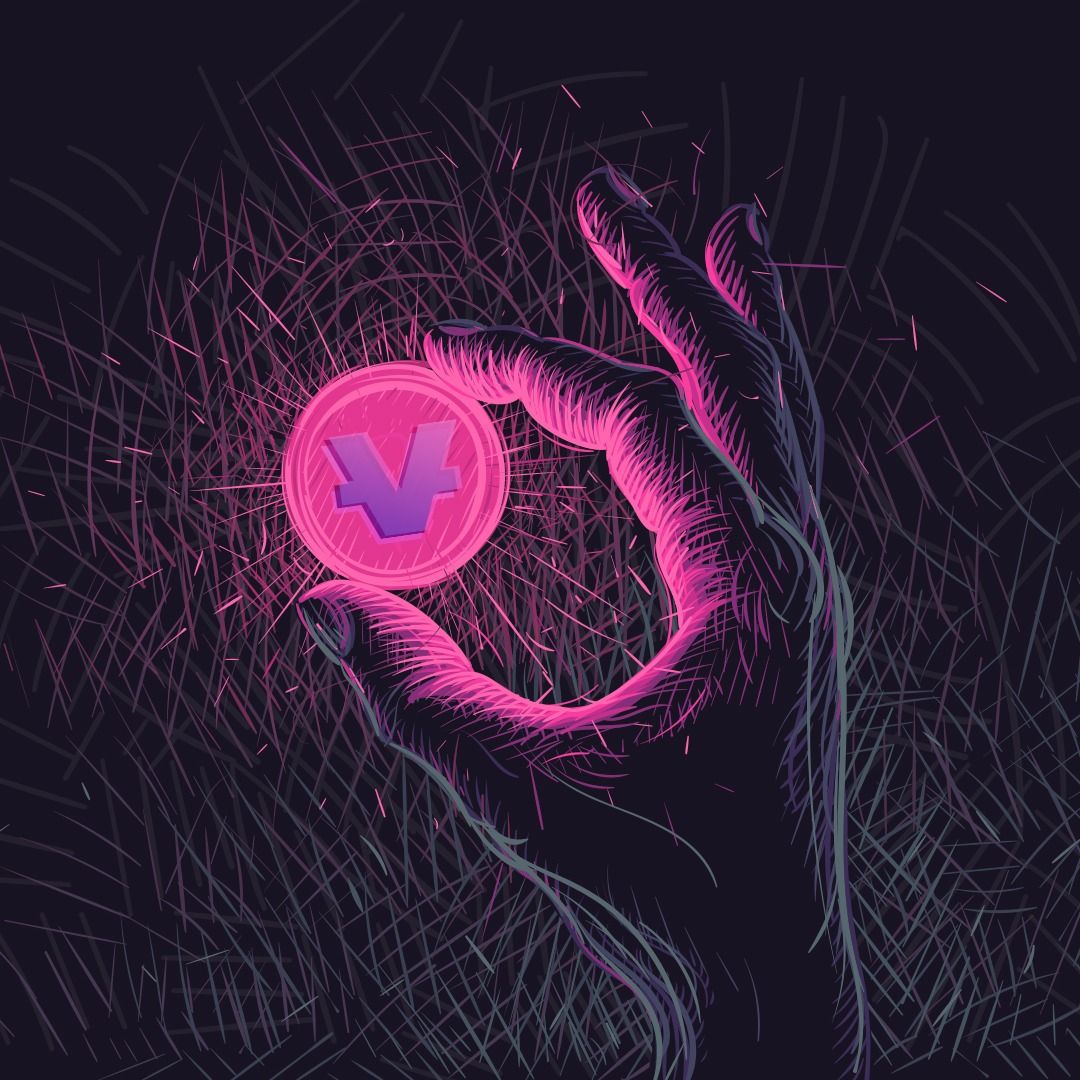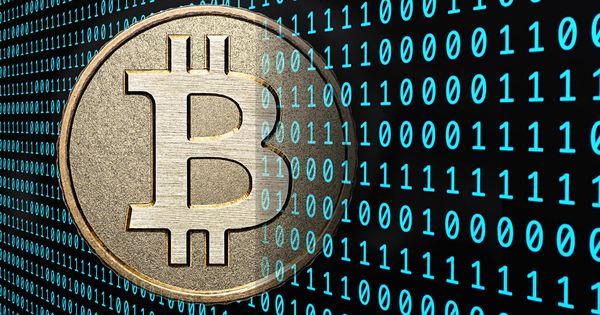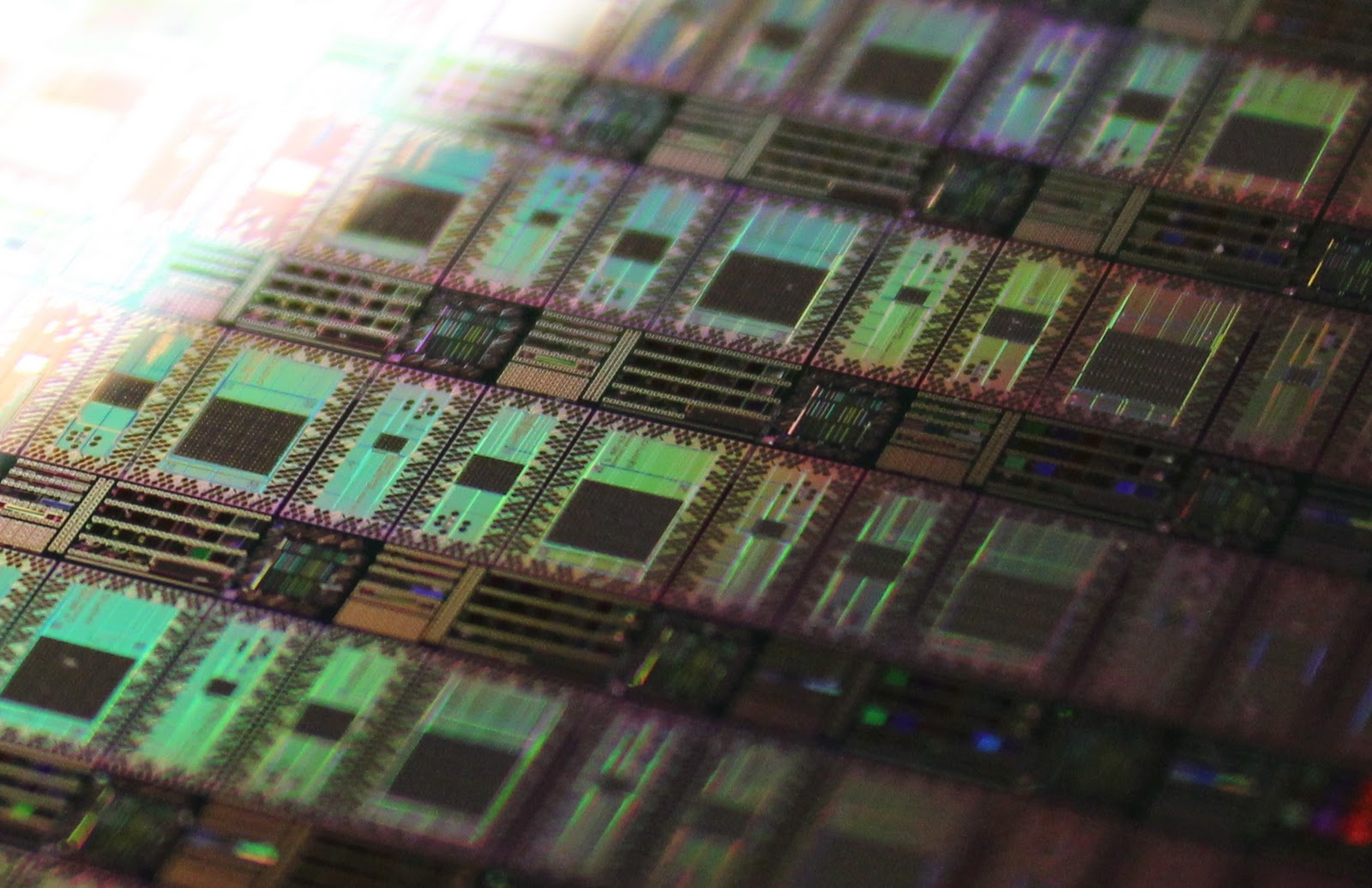The internet, as we know it, is undergoing a profound transformation. What began as a decentralized network evolved into a centralized landscape dominated by large corporations. However, a new paradigm is emerging: Web3, a revolutionary vision for the internet built on the principles of decentralization. By leveraging technologies like blockchain, cryptocurrencies, and decentralized autonomous organizations (DAOs), Web3 aims to shift control from powerful intermediaries back to individuals, fostering a more open, transparent, and equitable digital ecosystem. This isn’t merely an upgrade; it’s a fundamental reimagining of online interaction, where decentralization promises to unlock unprecedented value for users, creators, and businesses worldwide.
Understanding the Internet’s Evolution: From Web1 to Web3
To truly grasp the significance of Web3, it’s crucial to understand the internet’s historical journey and the architectural shifts that have defined each era.
A. Web1: The Read-Only Internet (1990s-Early 2000s)
The first iteration of the World Wide Web, often referred to as Web1, was primarily a static, read-only experience.
- Static Pages: Websites were mostly simple, static pages, serving as digital brochures. Content was largely created by a few, consumed by many.
- Information Consumption: Users primarily accessed information, with limited interactive capabilities. Think of early personal homepages, corporate sites, and directories.
- Decentralized Hosting (Initially): While content delivery networks existed, early web hosting was more distributed, with smaller servers hosting individual sites. However, the lack of robust infrastructure meant scalability and discovery were challenges.
- Limited Monetization: Business models were nascent, primarily revolving around banner advertising or basic e-commerce.
The core limitation of Web1 was its unidirectional nature – users consumed content but rarely contributed or interacted in meaningful ways. It laid the foundation but was a far cry from the interactive web we know today.
B. Web2: The Read-Write Internet and Centralization (Mid-2000s-Present)
Web2 ushered in the era of user-generated content and interactive applications, leading to exponential growth and the rise of platform giants.
- User-Generated Content: Technologies like AJAX, JavaScript, and improved broadband enabled dynamic web applications. Users could create content (blogs, social media posts, videos), interact with applications (online banking, e-commerce), and connect globally.
- Platform Dominance: This interactive functionality led to the rise of large, centralized platforms (e.g., Google, Facebook, Amazon, YouTube). These platforms offered convenience and powerful network effects, aggregating users and content.
- Data Centralization and Monetization: Users traded their data and attention for “free” services. Platforms leveraged this vast amount of user data for targeted advertising, becoming incredibly profitable.
- The “Walled Gardens”: While offering convenience, these platforms created “walled gardens.” They controlled access to data, dictated terms of service, censored content, and acted as intermediaries for all interactions, leading to concerns about privacy, censorship, and monopolistic power.
- Censorship and Control: Platforms had the unilateral power to deplatform users, remove content, or alter algorithms, raising questions about free speech and fair access.
Web2, while connecting billions, centralized power and value in the hands of a few tech giants, leading to a new set of challenges related to data ownership, privacy, and economic fairness.
C. Web3: The Read-Write-Own Internet (Emerging)
Web3 is the proposed next generation of the internet, characterized by decentralization, user ownership, and inherent value exchange. It aims to address the shortcomings of Web2 by leveraging blockchain and related technologies.
- Decentralized Infrastructure: Instead of centralized servers, Web3 applications (dApps) run on decentralized networks, primarily blockchains. This makes them resistant to single points of failure, censorship, and control by any single entity.
- User Ownership and Control: Users gain direct ownership of their data, digital assets (through NFTs), and even the platforms themselves (through tokens and DAOs). They can choose how their data is used and monetize their contributions directly.
- Interoperability: Web3 aims for greater interoperability between applications and platforms, allowing digital assets and data to move seamlessly across different services without being locked into proprietary ecosystems.
- Inherent Value Transfer: Cryptocurrencies and tokens are native to Web3, enabling peer-to-peer value transfer without intermediaries. This creates new economic models for creators, users, and developers (e.g., play-to-earn, token-gated access).
- Trustless Interactions: Interactions occur directly between parties (peer-to-peer) on the blockchain, governed by smart contracts, rather than relying on trusted third-party intermediaries. This reduces counterparty risk and friction.
Web3 promises a more equitable, transparent, and user-centric internet, unlocking new forms of value that were previously captured by centralized platforms.
Core Technologies Powering Web3’s Decentralization
The vision of Web3 is brought to life by a suite of interconnected, foundational technologies that enable its decentralized nature.
A. Blockchain Technology
At its heart, Web3 relies on blockchain technology, a distributed, immutable ledger that forms the backbone of decentralized networks.
- Decentralized Ledger: A blockchain is a distributed database that is shared and synchronized across a network of computers (nodes). Each node maintains a copy of the ledger, eliminating the need for a central authority.
- Immutability: Once a transaction or data record (a ‘block’) is added to the blockchain, it cannot be altered or removed. This ensures data integrity and provides an unchangeable historical record.
- Consensus Mechanisms: Networks use various consensus mechanisms (e.g., Proof of Work, Proof of Stake) to ensure all nodes agree on the validity of transactions and the state of the ledger, preventing fraud and ensuring security.
- Transparency: All transactions on a public blockchain are visible to everyone on the network, fostering transparency without revealing personal identities.
- Smart Contracts: Self-executing agreements whose terms are directly written into code and stored on a blockchain. They automatically execute when predefined conditions are met, enabling trustless automation of agreements without intermediaries. Ethereum pioneered widespread smart contract functionality.
B. Cryptocurrencies and Tokens
Cryptocurrencies and tokens are the native economic layer of Web3, enabling value transfer and new incentive structures.
- Digital Currency: Cryptocurrencies (like Bitcoin, Ether) are decentralized digital assets used as a medium of exchange, store of value, or unit of account within their respective blockchain networks.
- Utility Tokens: These tokens grant access to specific features or services within a decentralized application or ecosystem (e.g., paying for storage on a decentralized cloud network, voting rights).
- Governance Tokens: These give holders voting rights in the management and development of a decentralized protocol or DAO.
- Non-Fungible Tokens (NFTs): Unique digital assets whose ownership is recorded on a blockchain. They represent ownership of digital (or even physical) items like art, music, collectibles, or in-game items, enabling digital scarcity and verifiable ownership.
- Incentive Mechanisms: Tokens are used to incentivize network participants (e.g., miners/validators for securing the network, users for contributing data or content), aligning their interests with the network’s growth.
C. Decentralized Storage Networks
To truly decentralize the internet, data itself needs to be stored in a distributed manner, rather than on centralized servers.
- Peer-to-Peer Storage: Networks like Filecoin and Arweave allow users to store data on a decentralized network of computers, with data replicated across multiple nodes for redundancy.
- Censorship Resistance: By distributing data across many independent nodes globally, it becomes much harder for any single entity (government or corporation) to censor, remove, or control access to information.
- User Control of Data: Users retain direct control over their data, choosing who can access it and how it is monetized, moving away from centralized data silos.
D. Decentralized Autonomous Organizations (DAOs)
DAOs are a revolutionary new form of organization structured by rules encoded as smart contracts on a blockchain, controlled by token holders, not a central authority.
- Community Governance: Decisions within a DAO are made by its members (token holders) through transparent voting mechanisms. This shifts power from traditional corporate hierarchies to decentralized communities.
- Transparency: All rules, proposals, and voting results are recorded on the blockchain, making the operations of a DAO fully transparent and auditable.
- Flat Hierarchy: DAOs often have flatter, more meritocratic structures where contributions are recognized and rewarded by the community.
- Shared Ownership: Participants in a DAO often share in the ownership and future value of the protocol or project they govern through their tokens.
E. Decentralized Identifiers (DIDs) and Verifiable Credentials
To enable secure and private interactions in a decentralized world, new identity standards are emerging.
- Self-Sovereign Identity: DIDs allow individuals to control their own digital identity without reliance on a centralized authority (like Google or Facebook login).
- Verifiable Credentials: Digital proofs of identity attributes (e.g., age, degree, professional license) that can be issued by trusted entities but owned and presented by the individual, without revealing unnecessary information.
These core technologies collectively build the foundation for an internet that is fundamentally more open, transparent, and controlled by its users.
How Web3 Decentralization Unlocks Value Across Sectors
The promise of Web3’s decentralization isn’t just theoretical; it’s actively unlocking tangible value and creating new opportunities across a myriad of industries and facets of digital life.
A. Empowering Creators and the Creator Economy
Web3 dramatically shifts power and value back to individual creators, bypassing traditional intermediaries.
- Direct Monetization through NFTs: Artists, musicians, writers, and digital creators can tokenize their work as NFTs, selling directly to fans and receiving royalties on secondary sales, eliminating the need for labels, publishers, or galleries.
- Fan Ownership and Engagement: NFTs can provide fans with verifiable ownership of digital collectibles, exclusive access to content or communities, and even voting rights in creative decisions, fostering deeper engagement.
- Decentralized Platforms: Future platforms for content distribution (e.g., music streaming, video platforms) could be owned and governed by the creators and users themselves, ensuring fairer revenue splits and transparent rules.
- Removing Intermediary Fees: By facilitating peer-to-peer transactions, Web3 reduces the substantial fees typically taken by centralized platforms (e.g., app stores, streaming services), allowing creators to retain a larger share of their earnings.
B. Redefining Gaming and Virtual Worlds (Metaverse)
Web3 is fundamental to the vision of a truly open, interoperable, and economically vibrant metaverse.
- True Digital Ownership: Players genuinely own in-game assets (characters, skins, land, weapons) as NFTs. They can trade, sell, or transfer these assets across different games or metaverses, creating real economic value from virtual activity (play-to-earn).
- Player-Owned Economies: Game economies become decentralized, governed by players through DAOs, giving them a say in game development, monetization, and asset distribution.
- Interoperability of Assets: NFTs and decentralized identity standards allow assets and avatars to potentially move between different virtual worlds, creating a truly connected metaverse experience.
- New Monetization Models: Beyond traditional in-game purchases, players and creators can earn real value through gameplay, content creation, or land ownership in virtual worlds.
C. Transforming Finance: Decentralized Finance (DeFi)
DeFi is a rapidly growing sector using blockchain to create a new, open, and transparent financial system.
- Permissionless Access: Anyone with an internet connection can access DeFi services (lending, borrowing, trading, insurance) without traditional intermediaries like banks. This expands financial access globally.
- Transparency and Auditability: All transactions and smart contract code are transparently recorded on public blockchains, reducing opacity and counterparty risk.
- Reduced Fees: By eliminating intermediaries, DeFi services often operate with significantly lower fees compared to traditional finance.
- Innovation and Composability: DeFi protocols are designed to be “money legos,” meaning they can be combined and built upon, fostering rapid innovation in financial products and services.
- New Asset Classes: Tokenization of real-world assets (RWAs) and synthetic assets on blockchain allows for fractional ownership and new investment opportunities.
D. Enhancing Digital Identity and Privacy
Web3 aims to give users more control over their digital identity and personal data.
- Self-Sovereign Identity (SSI): Users gain full control over their digital identities and credentials, deciding what information to share and with whom, without reliance on central authorities.
- Reduced Data Exploitation: By owning their data and being able to selectively share it, users can choose not to let platforms monetize their personal information without consent or compensation.
- Censorship Resistance: Decentralized identity prevents single points of failure for authentication and reduces the risk of deplatforming.
- Verifiable Credentials: Allows for secure, cryptographic verification of identity attributes (e.g., age, professional qualifications) without revealing underlying sensitive information, enabling privacy-preserving interactions.
E. Revolutionizing Governance with DAOs
DAOs are introducing new models of governance for organizations, projects, and even communities.
- Transparent Decision-Making: All proposals and votes are recorded on the blockchain, providing full transparency and auditability of governance processes.
- Community Participation: Token holders (who can be anyone with a stake in the project) can participate directly in decision-making, leading to more inclusive and representative governance.
- Efficiency and Agility: Automated smart contracts can execute decisions agreed upon by the DAO, streamlining operations and reducing bureaucratic overhead.
- Global Collaboration: DAOs enable geographically dispersed communities to coordinate and manage shared resources or projects effectively without a central command.
F. Disrupting Supply Chains and Logistics
Blockchain’s immutability and transparency are ideal for transforming supply chain management.
- Enhanced Traceability: Tracking products from origin to consumer on an immutable ledger provides unparalleled transparency, helping combat counterfeiting and verify ethical sourcing.
- Improved Efficiency: Smart contracts can automate payments and conditional releases of goods as they move through the supply chain, reducing manual paperwork and delays.
- Reduced Fraud: The tamper-proof nature of blockchain makes it harder to falsify records, improving trust among participants in a supply chain network.
- Visibility and Collaboration: All authorized parties in the supply chain (manufacturers, logistics providers, retailers) have access to the same, up-to-date information, fostering better collaboration and coordination.
Challenges and Hurdles on the Path to a Decentralized Web3
While the promise of Web3 is immense, its widespread adoption faces significant technical, regulatory, and societal challenges that must be overcome.
A. Scalability and Performance Limitations
Current blockchain networks, especially those designed for high security and decentralization (like Ethereum), face significant scalability challenges.
- Transaction Throughput: Public blockchains often have limited transaction per second (TPS) capabilities compared to centralized systems (e.g., Visa processes thousands of TPS, while Ethereum is in the tens). This bottleneck impacts speed and user experience.
- High Transaction Costs (Gas Fees): During periods of high network congestion, transaction fees (‘gas fees’) can become prohibitively expensive, making micro-transactions impractical and pricing out many users.
- Storage Limitations: Storing large amounts of data directly on-chain is expensive and inefficient. Decentralized storage solutions address this, but their integration and performance still need maturity.
- Latency: The time required for transactions to be confirmed on a blockchain can be higher than centralized databases, impacting real-time applications.
Solutions like Layer 2 scaling (e.g., rollups, sidechains) and new consensus mechanisms (Proof of Stake, sharding) are being developed, but widespread, performant scalability remains a major hurdle.
B. User Experience (UX) and Accessibility
For the average user, interacting with Web3 applications can be daunting and complex.
- Steep Learning Curve: Concepts like wallets, seed phrases, gas fees, and smart contracts are unfamiliar and often intimidating for mainstream users.
- Complex Onboarding: Setting up and securing a Web3 wallet, acquiring cryptocurrency, and understanding decentralized application interfaces is a multi-step process that can deter new users.
- Poor Error Handling: Errors in Web3 can be unforgiving (e.g., sending crypto to the wrong address results in permanent loss). User interfaces often lack clear error messages or recovery options.
- Lack of Centralized Support: The decentralized nature means there’s no central customer service line for lost funds or technical issues, placing a greater burden on the user.
- Interoperability Challenges: While a goal, seamless interoperability between different blockchains and dApps is still an ongoing development, leading to fragmented experiences.
Simplifying UX and making Web3 as intuitive as Web2 is crucial for mass adoption.
C. Regulatory Uncertainty and Legal Frameworks
Governments and regulatory bodies worldwide are grappling with how to classify and regulate Web3 technologies.
- Legal Classification: Are cryptocurrencies securities, commodities, or currencies? How are NFTs classified? These questions have significant implications for taxation, compliance, and consumer protection.
- Consumer Protection: How can users be protected in a decentralized, trustless environment where intermediaries are absent and code is law?
- Anti-Money Laundering (AML) and Know Your Customer (KYC): Regulators are concerned about the potential for illicit activities in decentralized environments, pushing for stricter AML/KYC compliance.
- International Harmonization: The global nature of Web3 clashes with fragmented national regulatory approaches, creating a complex and uncertain legal landscape for businesses operating in the space.
- Decentralized Autonomous Organizations (DAOs): The legal status and liability of DAOs are largely undefined, posing challenges for their real-world operations and interactions with traditional legal systems.
D. Security Risks and Smart Contract Vulnerabilities
While blockchain is inherently secure, the surrounding ecosystem and smart contracts are not immune to vulnerabilities.
- Smart Contract Bugs: Flaws in smart contract code can lead to irreversible loss of funds or exploits, as the code executes automatically. Auditing and formal verification are critical but not foolproof.
- Wallet Security: Users are responsible for securing their private keys, and phishing attacks, malware, or human error can lead to stolen funds.
- Centralized Points of Failure in Decentralized Systems: Some Web3 projects still rely on centralized components (e.g., front-end hosting, oracle data feeds) which can introduce vulnerabilities or single points of control.
- Bridge Exploits: Cross-chain bridges, which allow assets to move between different blockchains, have been frequent targets for sophisticated hacks, leading to massive financial losses.
E. Environmental Concerns (for Proof of Work)
Early blockchain networks, particularly those using Proof of Work (PoW) consensus mechanisms (like Bitcoin), consume significant amounts of energy due to the computational power required for mining. This raises environmental concerns.
- Energy Consumption: The energy footprint of PoW blockchains is comparable to that of small countries, leading to criticism regarding sustainability.
- Carbon Footprint: The reliance on fossil fuels for electricity generation in some mining operations contributes to carbon emissions.
While newer consensus mechanisms like Proof of Stake (PoS) are significantly more energy-efficient, the perception and reality of energy consumption remain a challenge for Web3’s image and broader adoption.
F. Interoperability and Fragmentation
Despite the goal of a seamlessly interconnected Web3, the ecosystem is currently fragmented across multiple blockchains and Layer 2 solutions.
- Lack of Universal Standards: Different blockchain protocols, token standards, and identity solutions exist, making it challenging for applications and assets to communicate and transfer value seamlessly.
- Cross-Chain Bridges: While bridges enable cross-chain transfers, they introduce additional complexity and security risks.
- User Liquidity: Liquidity is often fragmented across various networks, making it less efficient for users.
Achieving true interoperability without compromising decentralization is a key developmental challenge.
Best Practices for Navigating and Thriving in Web3
For individuals, creators, and businesses looking to engage with Web3 and unlock its value, a strategic and cautious approach, coupled with continuous learning, is essential.
A. Prioritize Education and Continuous Learning
The Web3 space is rapidly evolving. For anyone entering, prioritize continuous education.
- Understand Fundamentals: Learn about blockchain basics, cryptocurrencies, smart contracts, NFTs, and DAOs.
- Stay Updated: Follow reputable sources, thought leaders, and research papers to keep abreast of new protocols, security practices, and regulatory developments.
- Start Small: Begin by experimenting with small amounts of value or in less critical areas to gain hands-on experience without significant risk.
B. Emphasize Security and Self-Custody Best Practices
Given the immutable nature of blockchain and the lack of centralized recovery, security is paramount.
- Secure Your Wallet: Use hardware wallets for significant assets. Protect your seed phrase offline and never share it. Be wary of phishing scams.
- Audit Smart Contracts: Before interacting with new dApps or investing in new protocols, look for independent security audits of their smart contracts.
- Understand Permissions: Be aware of the permissions you grant to dApps when connecting your wallet (e.g., unlimited approvals can be risky).
- Use Reputable Platforms: Stick to well-established and audited exchanges, marketplaces, and DeFi protocols.
C. Focus on Real-World Utility and Value Creation
Avoid falling for hype. For businesses and creators, concentrate on how Web3 can solve real-world problems or create genuine, sustainable value.
- Identify Core Pain Points: How can decentralization, ownership, or transparency genuinely improve an existing product, service, or business model?
- User-Centric Design: Develop dApps with user experience at the forefront, striving for simplicity and ease of use, even while leveraging complex backend technologies.
- Community Building: For DAOs and tokenized projects, prioritize building strong, engaged communities that genuinely contribute to the project’s success.
D. Navigate Regulatory Landscape Thoughtfully
The regulatory environment is uncertain, but it’s evolving.
- Stay Informed: Monitor regulatory developments in your region and target markets.
- Seek Legal Counsel: For significant Web3 projects or investments, consult with legal experts specializing in blockchain and cryptocurrency law.
- Compliance-Aware Design: Design your Web3 applications with potential future regulatory requirements (e.g., AML/KYC, data privacy) in mind.
E. Embrace Open Source and Collaboration
The Web3 ethos is deeply rooted in open source and collaboration.
- Contribute to Open Source Projects: Participate in the development of core Web3 infrastructure and protocols.
- Leverage Existing Protocols: Build upon existing, audited, and battle-tested decentralized protocols rather than reinventing the wheel.
- Engage with Communities: Participate actively in DAO governance, developer forums, and online communities to share knowledge and contribute to the ecosystem’s growth.
F. Design for Sustainability (for Developers)
For developers building Web3 solutions, consider the environmental impact.
- Prefer PoS Chains: Build on energy-efficient Proof of Stake (PoS) blockchains where possible.
- Optimize Smart Contracts: Write efficient smart contract code to minimize gas fees and computational load.
- Off-Chain Data Management: Store large data off-chain using decentralized storage solutions, only putting essential, immutable data on-chain.
The Future Trajectory of Web3: An Unfolding Revolution
The journey of Web3 is just beginning, but its trajectory promises to reshape many facets of our digital and economic lives. Several key trends will define its evolution.
A. Mass Adoption Through Improved User Experience
The biggest hurdle for Web3 is its current complexity. The future will see significant advancements in user experience (UX):
- Simplified Wallets and Onboarding: Wallets will become more user-friendly, potentially integrating with traditional login methods (e.g., social logins with cryptographic backing) or offering ‘account abstraction’ for easier management.
- Seamless Bridging and Interoperability: Tools and protocols will make it easier to move assets and data seamlessly across different blockchains, reducing fragmentation for users.
- Intuitive dApp Interfaces: Decentralized applications will feature interfaces as polished and intuitive as their Web2 counterparts, hiding underlying blockchain complexities from the average user.
- Bundled Gas Fees: Mechanisms that abstract away gas fees, allowing users to pay in familiar fiat currency or have gas sponsored by applications, will enhance usability.
B. Greater Real-World Asset (RWA) Tokenization
The tokenization of Real-World Assets (RWAs) will bridge traditional finance with decentralized finance.
- Fractional Ownership: Assets like real estate, art, luxury goods, and even private equity will be tokenized, allowing for fractional ownership and increased liquidity.
- Enhanced Liquidity: Tokenization makes illiquid assets more easily tradable on global, permissionless blockchains.
- New Investment Opportunities: Opens up investment opportunities in traditionally exclusive asset classes to a broader base of investors.
- Transparency and Efficiency: Blockchain provides a transparent and immutable record of ownership, reducing friction and cost in transfers.
C. Regulatory Clarity and Institutional Adoption
As the technology matures, governments and institutions will increasingly develop clearer regulatory frameworks.
- Harmonized Regulations: Efforts to achieve greater international harmonization of crypto and blockchain regulations will reduce uncertainty for businesses.
- Institutional Investment: Clearer regulations will pave the way for broader institutional adoption of Web3 assets and technologies (e.g., banks offering tokenized securities, large corporations using public blockchains for supply chains).
- Central Bank Digital Currencies (CBDCs): The development of CBDCs by central banks could significantly impact the broader digital currency landscape, potentially interacting with existing Web3 ecosystems.
D. Interoperable Metaverse and Virtual Economies
Web3 will be the backbone of a truly interoperable metaverse, allowing digital identities, assets (NFTs), and experiences to seamlessly traverse different virtual worlds.
- User-Owned Metaverses: Virtual land, items, and even governance in metaverses will be owned and controlled by users through NFTs and DAOs.
- Creator-Centric Virtual Economies: Creators can build and monetize virtual experiences, games, and items within the metaverse, retaining greater control and value.
- New Forms of Social Interaction: Web3 will enable novel forms of social interaction, collaboration, and commerce within persistent, user-owned virtual environments.
E. Decentralized AI and Data Markets
The convergence of Web3 with AI will lead to decentralized AI models and new data markets.
- Decentralized AI Training: AI models could be trained on decentralized networks, protecting data privacy and reducing reliance on centralized cloud providers.
- Data Ownership and Monetization: Users will have greater control over their data, potentially monetizing it directly in decentralized data markets, fueling ethical AI development.
- Auditable AI: Blockchain could provide transparent, immutable records of AI model training data, algorithms, and decision-making processes, enhancing trust and accountability in AI.
F. Impact on Traditional Industries Beyond Finance
While finance and gaming are early adopters, Web3’s decentralization will permeate many traditional industries.
- Supply Chain Transparency: Broad adoption for product traceability, anti-counterfeiting, and ethical sourcing.
- Healthcare Data Management: Secure, patient-controlled health records.
- Intellectual Property Management: Transparent and immutable records for copyrights, patents, and royalty distribution.
- Voting Systems: More secure and transparent digital voting mechanisms.
Conclusion
Web3 is not just an incremental technological update; it represents a bold, ambitious vision for a fundamentally different internet. By championing decentralization, it aims to dismantle the centralized control of Web2 giants, shifting power, ownership, and value back to the individual user and creator. Through the robust foundations of blockchain technology, the innovative economic models of cryptocurrencies and NFTs, and the participatory governance of DAOs, Web3 is poised to unlock unprecedented value across a multitude of sectors.
While significant challenges remain—from scaling technical infrastructure and simplifying user experience to navigating complex regulatory landscapes and mitigating security risks—the momentum behind Web3 is undeniable. As these hurdles are addressed, we will witness a future where digital ownership is truly verifiable, online interactions are more transparent, and value is distributed more equitably. The transition will be gradual, complex, and potentially disruptive, but the promise of a more open, user-controlled, and value-generating internet makes Web3 a truly revolutionary blueprint for our digital future. It is a testament to the enduring human desire for autonomy and fairness in the evolving digital frontier.














